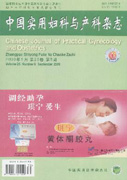In China,the incidences of venous thromboembolism(VTE)ranged from 0.02% to 2.26% among Gynecological patients and from 0.056% to 0.188% among women during the time period around delivery.Nevertheless,these incidences could be underestimated due to methodology limitaions in VTE studies.A large scale,multicentre,prospective cohort study is recommended to investigate VTE incidences so as to generate reliable evidence for women’s VTE treatment and prevention.

